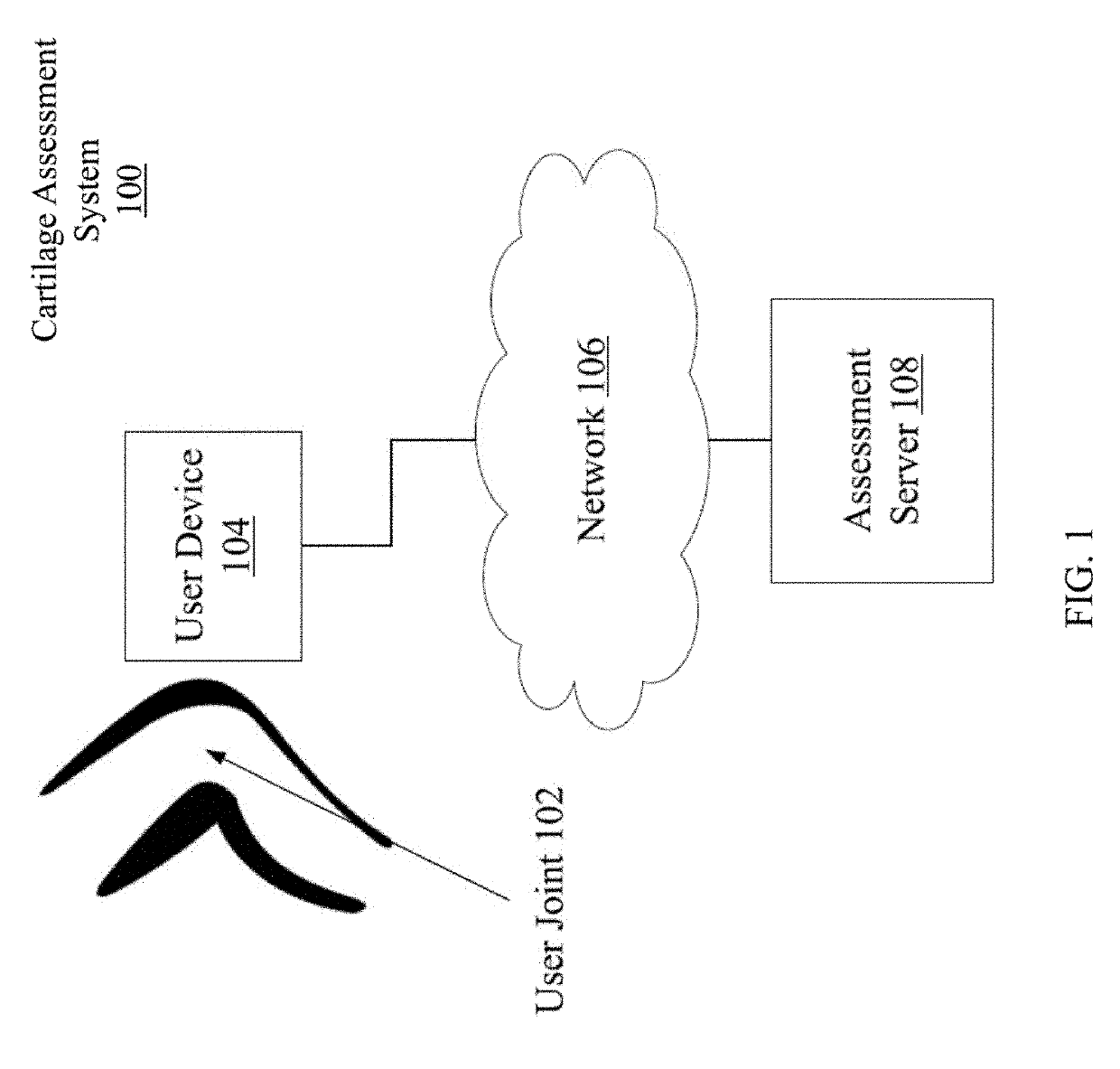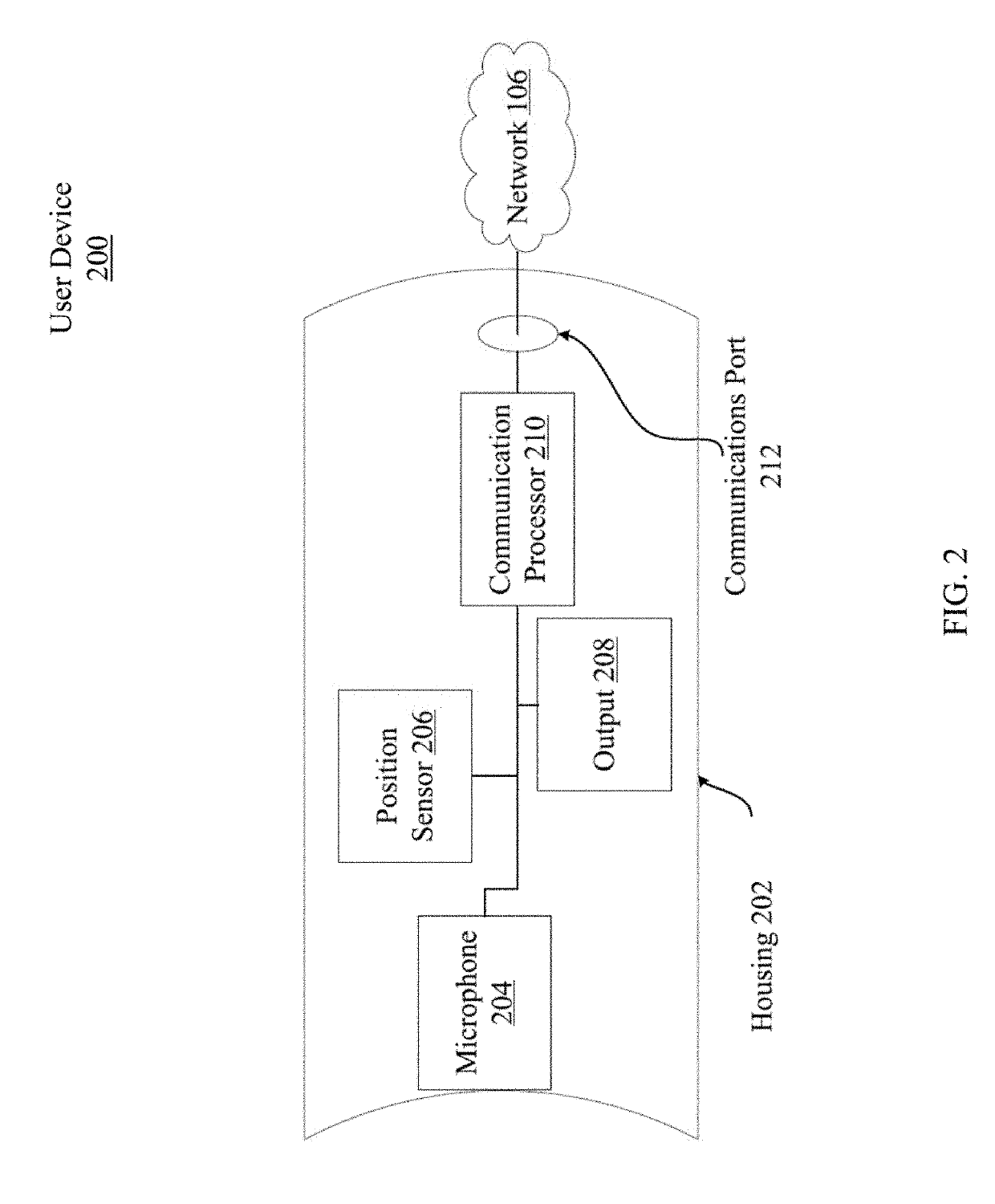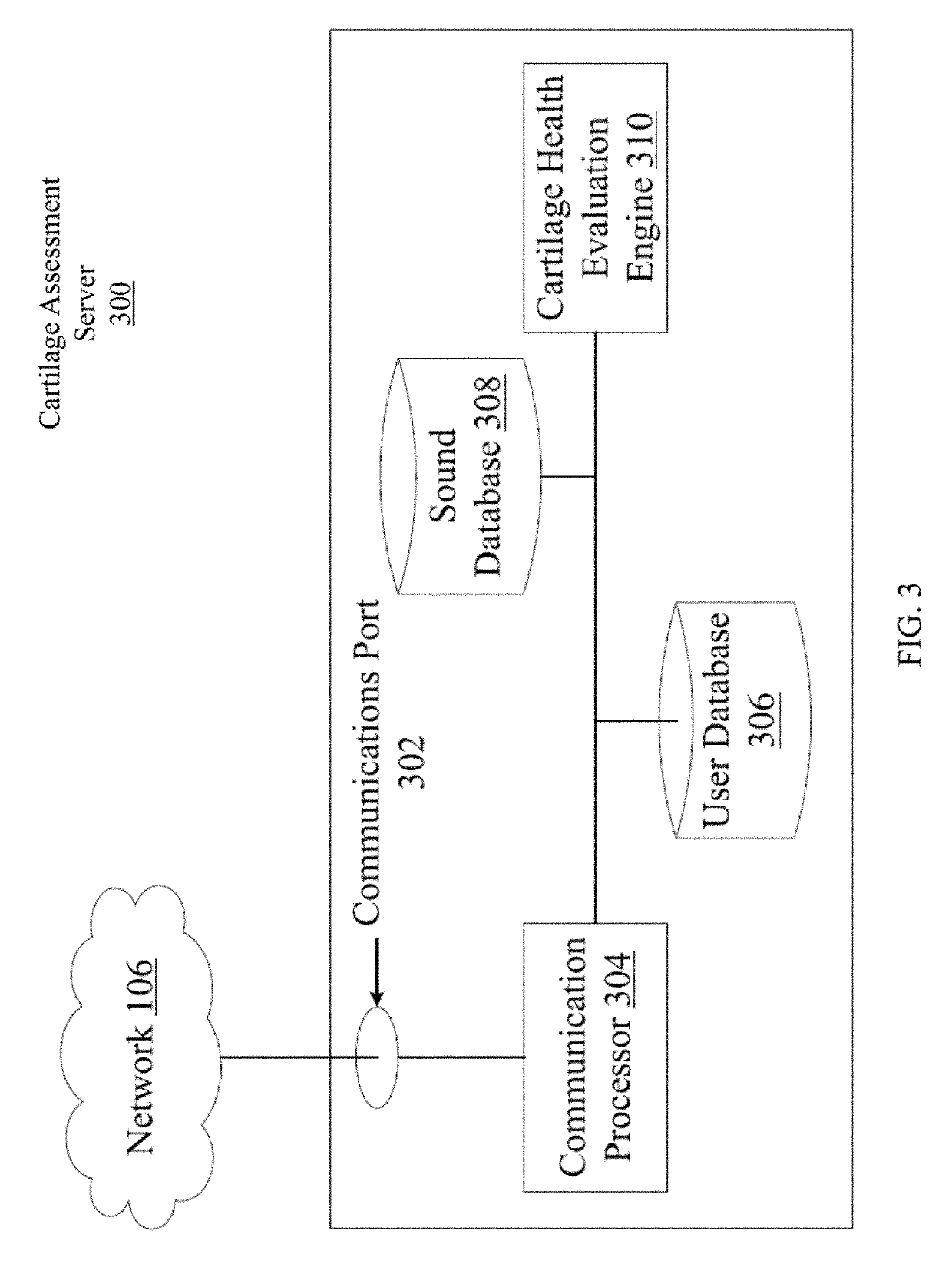Assessing joint condition using acoustic sensors
a joint condition and acoustic sensor technology, applied in the field of joint condition assessment using acoustic sensors, can solve the problems of drowning out signals of interest, previous efforts to develop phonoarthrography systems were not only limited in technology, and achieve the effects of fostering a healthy lifestyle, simple and non-invasive way, and increasing performan
- Summary
- Abstract
- Description
- Claims
- Application Information
AI Technical Summary
Benefits of technology
Problems solved by technology
Method used
Image
Examples
Embodiment Construction
[0055]In the following description, numerous details are set forth for the purpose of explanation. However, one of ordinary skill in the art will realize that the implementations described herein may be practiced without the use of these specific details and that the implementations described herein may be modified, supplemented, or otherwise altered without departing from the scope of the systems and methods described herein.
[0056]The systems and methods described herein relate to assessing cartilage condition, including health and well-being. Noises made by a joint during motion are related to the condition of the joint. As such, analyzing such noises in light of other user information (e.g., age, gender, medical history, or other suitable data) allows earlier detection of cartilage problems. A user's joint noises are recorded, denoised, and compared to noises made by similar users to generate a joint health score and recommendations for user action. In some implementations, recom...
PUM
 Login to View More
Login to View More Abstract
Description
Claims
Application Information
 Login to View More
Login to View More - R&D
- Intellectual Property
- Life Sciences
- Materials
- Tech Scout
- Unparalleled Data Quality
- Higher Quality Content
- 60% Fewer Hallucinations
Browse by: Latest US Patents, China's latest patents, Technical Efficacy Thesaurus, Application Domain, Technology Topic, Popular Technical Reports.
© 2025 PatSnap. All rights reserved.Legal|Privacy policy|Modern Slavery Act Transparency Statement|Sitemap|About US| Contact US: help@patsnap.com



